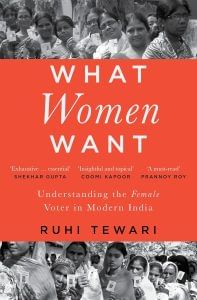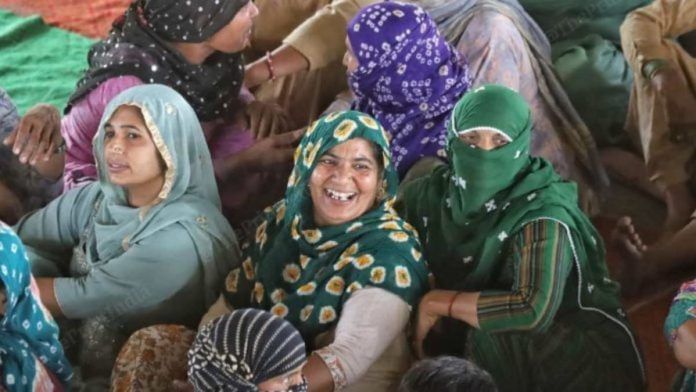Former Tamil Nadu Chief Minister MG Ramachandran and former Andhra Pradesh Chief Minister N T Rama Rao were among the pioneers of this trend of appealing to women. Both were actors-turned-politicians and were popularly known by their initials MGR and NTR, respectively.
Much has been said about how the two southern stalwarts were far ahead of their times, wooing women voters and pushing policies tailored to empower them. For instance, in 1984, NTR introduced legislation granting women an equal share in paternal property, a revolutionary move for its time. A year earlier, his government had issued an order reserving 30 per cent of all government jobs for women.
Senior journalist Amarnath K. Menon has stated,
Women have always played a major role in Andhra Pradesh Chief Minister N.T. Rama Rao’s life – his political life, that is. Women voters have flocked en masse behind his saffron banner and after becoming chief minister he has continued to woo them with unconcealed ardour, mainly through myriad schemes and programmes meant to improve their lot.
NTR did not stop at policies alone; he also ensured adequate representation for women in the party. Every Telugu Desam Party office, down to the village level, had at least one woman member on the executive, a provision enshrined in the party constitution. He served as chief minister for three (albeit interrupted) terms. MGR, meanwhile, capitalized on his popularity and resonance among women from his film career to build a loyal vote bank. He was chief minister for 10 years, from 1977 until his death in 1987.
Another senior journalist, G. Babu Jayakumar, had this to say about MGR:
Of the many things that made MGR succeed as a politician, one was the overwhelming women’s support that he enjoyed. Subaltern women for various reasons – one of them is their falling flat for the image he created for himself through his celluloid characters – believed that he was their saviour in those days when misogyny was glossed over in all walks of life.
Also read: Why Group Captain Nachiketa has ‘immense respect’ for a Pakistani Captain
MGR’s on- and off-screen persona – someone who never smoked or drank – also helped bolster his image among women, in addition to his good looks. Such was the devotion of women to MGR that many went against the wishes of male family members to vote for his party, the All India Anna Dravida Munnetra Kazhagam (AIADMK). K. Ezhilarasa wrote in an article for The New Indian Express, ‘MGR came in as a protector of women, an image cultivated through films and a personal aura created through his customary address of women as “Thai Kulam” [roughly, community of mothers]… Many men complained of their wives and mothers casting votes in favour of J. Jayalalithaa and M.G. Ramachandran against their wishes.’
MGR was a visionary in his own right, launching programmes that helped improve the lives of women and children. The 1982 Nutritious Meal Programme was one such initiative. With its emphasis on education and nutrition, it aimed to boost school enrolment and provide food to underprivileged children, while also creating jobs for women. This scheme benefited both mothers and children and further earned him the love of the woman voter.
What also helped cement his image as a leader who stood with women was his inclusion of more women in party affairs. He gave Jayalalithaa her political launch and promoted her despite opposition from several senior leaders. And even before she emerged as the party’s central figure, MGR had appointed two women ministers in his cabinet, P.T. Saraswathy and Subbulakshmi Jagadeesan.
MGR and NTR understood what many Indian politicians did not until much later: the political and electoral importance of empowering women, and the latent potential of creating a loyal and numerically significant constituency among them. Women, meanwhile, clearly adored these leaders.
They were initially drawn to their on-screen personas, but what endured was their forward-looking approach to empowerment. NTR’s policies were radical for his time and aimed to offer women equal rights and opportunities. MGR actively encouraged women’s participation in politics – a space until then dominated almost exclusively by men, barring exceptions like Indira Gandhi. That sense of gratitude led women to place their trust and votes in them.
The examples of NTR and MGR show how the early seeds of the current trend in women’s electoral behaviour were first sown. Jayalalithaa, six-time chief minister of Tamil Nadu (including incomplete terms), was a true protégée of MGR. She carried forward and amplified his legacy of making women central to policy and politics, earning their loyalty in return. She addressed her first major public meeting in Cuddalore in 1982 at the age of 34, shortly after being inducted into the party. The theme of her speech was ‘Pennin Perumai’ (the greatness of a woman).
‘Modi ji ki har baat acchi lagti hai’
While different parts of the country saw formidable leaders emerge and rule, India found its second national political cult figure exactly three decades after Indira Gandhi’s assassination, when Narendra Damodardas Modi captured the imagination of the masses and became prime minister in 2014.
It was the summer of 2019, and the country was in the midst of a bitterly fought Lok Sabha election.
The Congress’s face, Rahul Gandhi, declared, ‘Chowkidaar chor hai’ (a reference to Narendra Modi being a thief in the context of the Rafale scam allegations), while the prime minister portrayed himself as a kaamdaar (worker) being targeted by a naamdaar (dynast).
Narendra Modi was riding high. He was basking in the fresh glory of being the ‘protector’ of the nation, following the Balakot air strikes – a retaliation against the Pulwama attack that killed 40 Central Reserve Police Force (CRPF) personnel. He had a slew of welfare schemes to showcase, many targeting women, launched during his first term from 2014 to 2019. He had his vikas pitch, a strong Hindutva and nationalism narrative, electoral successes and the BJP’s formidable election machinery. And he faced a splintered, directionless Opposition struggling with credibility.
But in this neatly wrapped political hamper, Modi knew his most potent electoral tool was himself. The results of that election, which the BJP swept with an impressive mandate, winning 303 seats by itself, showed that the ‘Modi is BJP and BJPis Modi’ narrative was deeply entrenched in public psyche. It was also the first Lok Sabha election in which women voters outnumbered men and played a decisive role. And they overwhelmingly rallied behind Modi.
It was early May 2019, and both political and atmospheric temperatures were soaring. In Indore, Madhya Pradesh, a group of young female students braved the heat, sitting on the lawns of Devi Ahilya Vishwavidyalaya’s Takshashila campus. Dressed in cotton salwar kameezes, they were preparing for competitive exams. Their bags, books and dupattas were strewn across the grass as they discussed studies and the ongoing election. Their refrain was clear: ‘Modi should be prime minister.’ They were not voting for their local candidate or even the BJP, but for Modi himself.
‘Modi ji ki har baat acchi lagti hai (We like everything about Modi),’ they said. According to the ‘India Today-Axis My India’ post-poll study, while the BJP had traditionally been more popular among men than women, in 2019, the trend reversed: 46 per cent of women voted for the NDA, compared to 44 per cent of men.
 This excerpt from Ruhi Tewari’s ‘What Women Want’ has been published with the publisher, Juggernaut’s, permission.
This excerpt from Ruhi Tewari’s ‘What Women Want’ has been published with the publisher, Juggernaut’s, permission.






